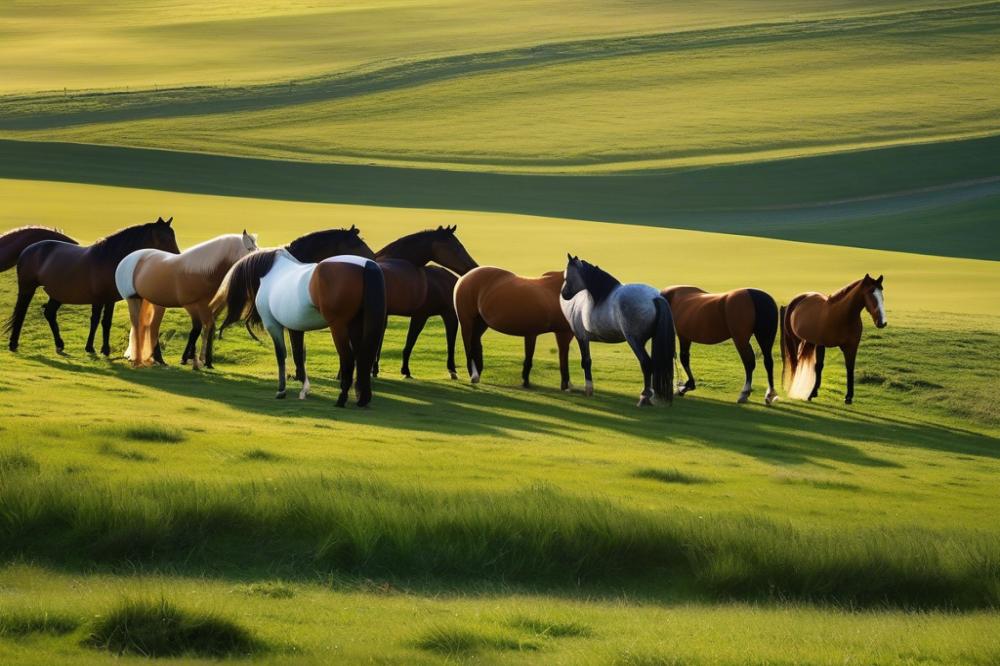Introduction
Recognizing the most expensive horse breeds opens the door to understanding a world where value and prestige run deep. These magnificent animals are not just companions; they often represent a significant financial investment. Price tags can soar into the hundreds of thousands or even millions of dollars. Understanding why certain breeds command such high prices is essential for potential buyers and enthusiasts alike.
Several factors drive the costs associated with these equines. Their lineage, for instance, can play a vital role in establishing their worth. Champions from prestigious competitions usually fetch the highest prices. Furthermore, health, training, and availability in the market contribute to overall expenses. Certain traits can elevate a horse’s value, and it’s important to recognize what these traits entail.
Quality bloodlines and exceptional conformation often set these animals apart. For many, the allure lies not just in their beauty but also in their performance capabilities. horse breeding practices have evolved, focusing on producing individuals that excel in both spirit and athleticism. This quest for excellence reflects a commitment to maintaining high standards within the industry. Overall, the captivating world of expensive horse breeds requires a deeper understanding beyond what meets the eye.
Factors Contributing to the Cost of Horse Breeds

Breeding Costs and Their Impact on Prices
Breeding horses can be quite expensive. Many factors contribute to these high costs. Selective breeding requires experienced handlers and access to quality stallions. Foals often need special care from birth. These expenses accumulate over time, driving up the final price of a horse. Additionally, the health of the mare is crucial. A healthy mother produces stronger offspring, which can also affect market value. Owners must often invest in veterinary care and nutrition to maintain this health. All these elements illustrate why some breeds command higher prices in the marketplace.
Importance of Pedigree in Determining Value
A horse’s lineage plays a significant role in its worth. Buyers often seek animals with impressive ancestry. Champions produce champions, as the saying goes. Horses with a documented history of performance in competitions typically attract more attention. Bloodlines associated with success in racing or show jumping are especially prized. The more prestigious the pedigree, the higher the selling price tends to be. Investors understand that pedigree reflects quality, making it a critical factor in assessing value. It’s not just about the horse; it’s about its lineage.
Role of Training and Expertise in Assessing Worth
Training can greatly influence a horse’s market value. Well-trained horses often command significantly higher prices. Trainers who have a reputation for excellence can add to a horse’s appeal. A solid training background suggests potential for competitive success. Ownership of a horse with advanced skills can be seen as a potential investment. Moreover, the expertise of the rider or handler also matters in this equation. Experienced professionals enhance a horse’s abilities through their knowledge and skills. Ultimately, both training and expertise leave a lasting impact on how buyers evaluate worth.
Featured Expensive Horse Breeds

Thoroughbred: The Gold Standard of Racehorses
Thoroughbreds are perhaps the most recognized racehorses in the world. Known for their speed and agility, these animals often fetch high prices at auctions. A successful Thoroughbred can command millions. Their lineage plays a significant role in this value. Each horse’s pedigree can add to its appeal. Breeders aim to produce champions who will win prestigious races, increasing their worth exponentially. The demand for Thoroughbreds in racing keeps prices high and reflects their storied history in horse racing culture.
Arabian: The Ancient Breed with Timeless Appeal
Arabians have been around for thousands of years. This breed is legendary for its endurance and beauty. Owners value them not just for their performance but also for their striking looks. They come with a robust history that connects deeply with many cultures. These horses often possess a friendly temperament, making them appealing for both riding and companionship. Prices can vary widely, but exceptional Arabians can attract significant bids at sales. Even though they are not the most expensive, their rich heritage adds to their allure.
Andalusian: A Show Jumper’s Dream
The Andalusian breed is well-regarded for its grace and versatility. Often seen in dressage arenas, these horses shine in competitions. They also excel in jumping events, making them popular among riders. Their striking appearance and flowing mane capture attention. Buyers appreciate their trainability, which can lead to higher sales prices. Some exceptional individuals have sold for record amounts. The breed’s strong muscular build and elegant movement contribute to their status among horse enthusiasts.
Comparison of Costs Among These Breeds
When comparing costs, Thoroughbreds generally sit at the top of the price range. Although many Thoroughbreds sell for tens of thousands of dollars, some have reached several million. Arabians follow, often ranging from a few thousand to hundreds of thousands depending on lineage and training. Their ancient beauty tends to hold considerable value. Meanwhile, Andalusians often cost between lower and moderate prices, depending on abilities and training. Market dynamics drive these differences. Each breed offers something distinct to owners, influencing their worth.
Equine Investments and Economic Considerations
The market for premium horse breeds has seen steady growth in recent years. Buyers are often willing to spend large sums of money. Certain breeds, such as Thoroughbreds and Arabians, fetch exceptionally high prices at auctions. The allure of pedigree and performance drives this demand. Buyers believe that a well-bred horse can excel in competitions or racing. Such expectations often translate into substantial financial commitments.
Costs associated with horse care and maintenance can be significant. Monthly expenses include feed, bedding, and veterinary care. Stabling can range from moderate to extravagant, depending on the horse’s needs and the owner’s desires. Regular grooming and training add to the overall price tag. The equine lifestyle requires dedication and ample resources. Owners must consider all these factors before making a purchase.
Investing in horses presents various potential returns. Successful racehorses or show champions can bring in considerable profits. Prize money is just one way these magnificent creatures can generate income. Breeding also offers prospects for financial gain. Stalwarts in the industry often speak of their returns as they balance risks and rewards. Passion combined with strategy can lead to success in this field.
In recent years, the shift towards online sales has transformed how buyers approach acquisitions. Virtual bidding creates opportunities for people from all over. Buyers must still conduct thorough research to make informed decisions. Equine investments can be risky, but with the right strategies, rewards are achievable. Financing options are sometimes available, making ownership more accessible.
Overall, the horse market attracts a wide range of enthusiasts. Some focus on competition, while others may view it primarily as a source of income. Each individual’s approach is shaped by personal goals and circumstances. Understanding the economics of horse ownership is crucial for anyone looking to enter this vibrant sector.
The Value of High-Quality Horse Care
Proper care is crucial for any horse, but it becomes even more essential when dealing with high-value breeds. Owners must understand the importance of consistent, quality training. A well-trained horse not only promotes safety but also enhances performance. Training can increase a horse’s market value and appeal. Investing in the right trainer is key to success.
When horses are healthy, they shine in competitions and shows. Health and wellness directly affect a breed’s overall value. Regular veterinary care is necessary for all horses, but expensive breeds require more attention. Preventive measures like vaccinations, dental checks, and routine health assessments should not be overlooked.
Long-term care costs can add up significantly. Feeding the right diet ensures that horses remain in peak condition. High-quality feed and supplements can be expensive but are crucial for maintaining health. Additionally, specialized equipment like saddles and bridles can be costly. Grooming and daily upkeep also require a considerable investment of time and money. For these reasons, owning a high-priced horse can be a long-term commitment.
Bringing It All Together
Throughout our discussion, we’ve uncovered the intricacies behind the priciest horse breeds. Not only do breeds like the Arabian and Thoroughbred command high prices, but their unique qualities contribute significantly to their value. Exceptional lineage, discipline in training, and competition success elevate their standing in the equestrian community. Furthermore, the rich history and cultural significance of these breeds add to their allure. These factors make investing in such horses appealing to enthusiasts and serious riders alike.
Final thoughts on making investments in premium horse breeds merit careful consideration. Prospective buyers must recognize that the initial purchase is only part of the commitment. Ongoing care, regular vet visits, and proper training play crucial roles in maintaining a horse’s health and performance. Therefore, understanding both the monetary and time investments required is essential before making a choice.
As you embark on selecting a breed, contemplate your lifestyle and needs. Each horse possesses distinct traits that may align with your goals. Prioritizing the characteristics important to you can guide your decision, whether it’s for competitive events or leisurely rides. Choose wisely and enjoy the journey. Exceptional horses are not just about the price; their attributes and profile create memories that last a lifetime.



